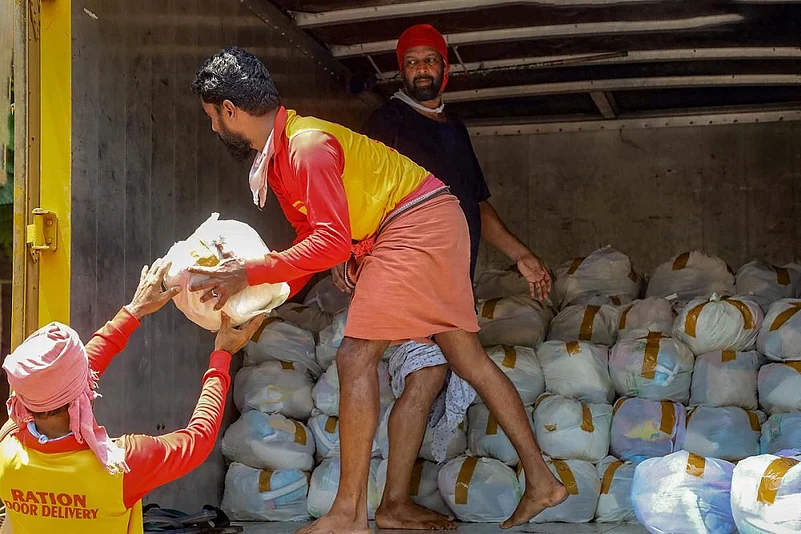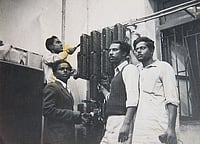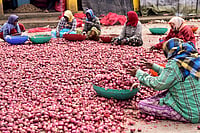Many individuals and organizations are engaged in food relief work in light of the COVID-19 crisis and other calamities such as cyclones and floods. While procuring, packing and distributing food materials in such situations is not easy, here are some suggestions on how ration packets may be designed to provide a balanced meal even during such conditions.
Here's What To Put In Your Ration Pack
While procuring, packing and distributing food during a pandemic is not easy, here are some suggestions on how ration packets may be designed to provide a balanced meal

It may be hard to think about nutrition, when people are struggling to get access to even basic minimum food. However, COVID-19 has only highlighted the need to focus on nutrition. Many studies have shown that a healthy body with a strong immunity, developed through a healthy diet, is the best protection against the disease. Multiple advisories are recommending people to eat healthy,? and avoid packaged junk food during this time. Therefore, to the extent feasible, it is important that our relief efforts on food also focus on nutrition.
Our body needs a combination of macronutrients (carbohydrates, fats and proteins) and micronutrients (vitamins and minerals). While the specific requirements for each individual will vary depending upon their age, sex, physical activity and other factors, a well-balanced meal will include each of these types of nutrients. Some of the common sources of these nutrients are as follows:
· Carbohydrates: Cereals (like rice, wheat, maize and millets), roots and tubers (like potato, carrot, radish and beetroot)
· Fats: Ghee, butter, oil
· Proteins: Milk and milk products, legumes and pulses, nuts, egg, fish, meat
· Vitamins and minerals: Green leafy vegetables, other vegetables, fruits, milk and milk products, eggs
Ideally, a ration packet should include foods from different food groups (such as grains; milk and milk products; fats; pulses, legumes, nuts, seeds, eggs, meat and fish; and fruits and vegetables) to include all macro and micro-nutrients. The table below provides a non-exhaustive list of items from different food groups, that may be included in a ration packet. There may be various challenges during an emergency situation, including around availability of food products, shelf life, packaging and others. There may also be seasonal and regional variations. Therefore, a ration packet may be designed based on what is feasible in a given situation, while trying to include items from different food groups.

Some Considerations When Designing Ration Packets
?The above table provides a non-exhaustive list of items from different food groups, that may be included in a ration packet. Availability, cost, and feasibility would be important factors when choosing the final content for the packet. The following points may help in making the choice.
Shelf-life: Since shelf-life will be an important concern, longer shelf-life options may be explored. For example, among vegetables, roots and tubers, such as potato, gourds, carrot and beetroot have a longer shelf-life, and therefore may be preferred over others. If it is difficult to deliver non-vegetarian food items due to short shelf life or breakage concerns, then soya bean and its products like soya chunks can be given which have high protein content. If it is possible to provide milk and milk products, tetra packs may be included.
Also Read| Are Samosas Chasing You?
Spices and dried vegetables: Do not forget to include spices when preparing ration packets, because without them, the beneficiaries will not be able to prepare the meals. It is thereforeimportant to include at least the basic ones. A spice mixture, like kitchen king or sambar masala, may be a good way to cut costs while catering to the local cuisine requirements.
Spices can also be used to enhance the nutrition content of the ration packets without including other bigger items. For example, one way to include green leafy vegetables is to give them as dry powders such as kasturi methi powder, which are long-lasting and nutritious. These can be added to all food preparations to enhance nutrient content of the regular food items.
Using processed food alternatives: Though it may be convenient, it is better to avoid including too many processed food items such as biscuits, namkeen packets, chips and other such products. Instead, healthy ready-to-eat snack items such as roasted chana, roasted peanuts, chana zor garam, bhel, and roasted wheat puff can be included.
Other items: Other items, such as sanitary pads, soaps, masks and tea may also be included along with the other ration items, based on the circumstances and requirements.
Undertaking relief work during the times of crisis is not easy. Trying to make a ration packet more nutritious may be difficult and inconvenient, but we can all begin with some small and easy modifications. It will go a long way in building a healthy population, which is more capable of fighting against future challenges.
(Amit and Raadhika are co-founders of Foodshaala Foundation (www.foodshaala.org), a non-profit organization working towards enabling people to choose and access healthy food.?They would like to thank Dr. Ratnaraje Thar, Research Director at College of Home Science Nirmala Niketan, Mumbai, for her valuable advice and support for this article. )
- Previous Story
 Priyanka Chopra Says Guneet Monga's 'The Elephant Whisperers' Is A Trunk-Filled With Emotions
Priyanka Chopra Says Guneet Monga's 'The Elephant Whisperers' Is A Trunk-Filled With Emotions - Next Story




















